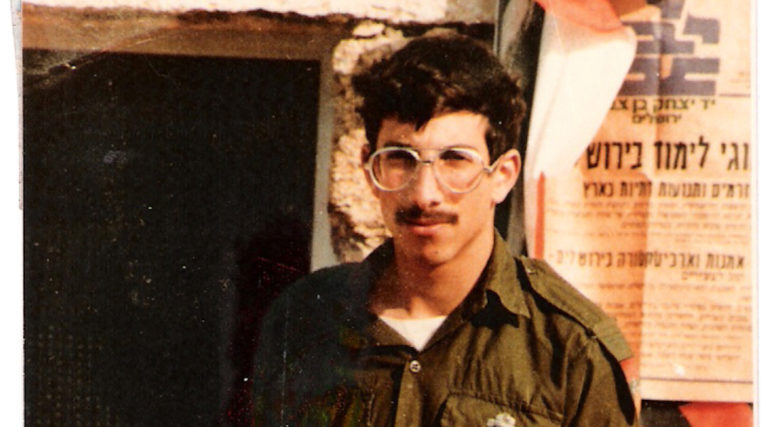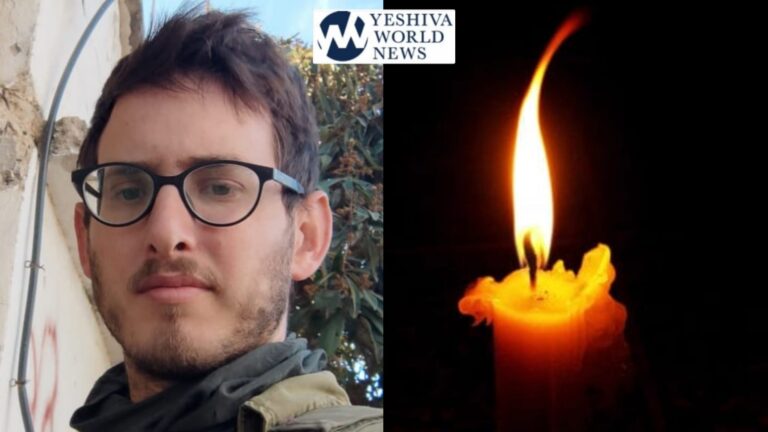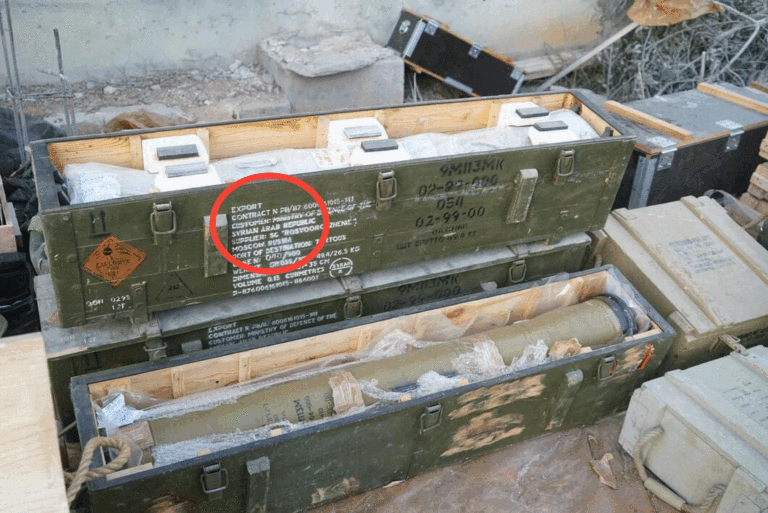By Rabbi Yair Hoffman for 5tjt.com
The Zohar (Vol. II 183b) tells us that Matzah is called “michlah d’mehemnusah – food that increases emunah – faith in Hashem.” There is also a minhag mentioned in Shulchan Aruch (OC 429:1) to ensure that every member of the community have kimcha d’pischa – flour for Pesach in order to have Matzah. Putting these two notions together, the Nesivos Shalom explains that one should help ensure that each member of the community build their emunah.
For many years, there was, rachmana litzlan, a Yiddisha neshama whose guf never received a burial. His body was being held by terrorists – who for 37 years refused to allow his body to be returned for burial.
Six days into the first Lebanon War, Sergeant Zechariah (Zachary) Baumel, 22 years of age and an oleh from Brooklyn, NY, was one of three Israeli soldiers captured by Syrian armed forces during a battle at Sultan Yacoub in 1982.
Over the years, much hishtadlus was made to determine his condition and fate, along with two other soldiers captured in the battle, Tzvi Feldman and Yehudah Katz. Later, the hishtadlus would focus on trying to recover their bodies. After some assistance from Russian president Vladimir Putin – there have been results.
On Wednesday, this past 27th of Adar, Lieutenant Colonel Jonathan Conricus of the IDF Spokespersons Unit confirmed that, after 37 years, the remains of Zechariah Baumel, were returned for Kvurah in Eretz Yisroel. The operation was called, “Operation Bittersweet Song.” It is a bittersweet nechama – bittersweet because the loss is now permanent but, nonetheless, a nechama. His body is finally home.
This nechama was perhaps alluded to, long ago, during the time of the second to last king of Yehudah, Yehoyachin.
In Malachim II (25:27), there is a fascinating pasuk:
“And it was in the thirty-seventh year of the exile of Yehoyachin king of Yehudah, in the twelfth month (Adar), on the twenty-seventh day of the month, that Ehvil-Merodach, king of Bavel, in the year of his coronation, lifted up the head of Yehoyachin, king of Yehudah and released him from prison.”
For those that missed it – both were after 37 years and both were on the 27th of Adar.
The Hakdama to the Otzer HaMidrashim (Rav Naftali Greenbaum Vol. VII), citing both the Talmud Yerushalmi and another sefer, explains this verse as follows:
והוא רמז לישראל שעוד יקויים בהם ג”כ מקים מעפר דל וגו’ ובקרוב ישמחנו ה’ אלוקינו באליהו הנביא עבדו ובמלכות בית דוד משיחו במהרה יבוא ויגל לבנו על כסאו לא ישב זר ולא ינחלו עוד אחרים את כבודו כי בשם קדשך נשבעת לו שלא יכבה נרו לעולם ועד אכי”ר
It is a hint to the nation of Israel – that the verse “and He will bring up the poor from the dust..” and shortly, Hashem will cause us to rejoice with his servant Eliyahu HaNavi and with the kingdom of Dovid HaMelech, His anointed one, and will cause us to be happy and no stranger will sit in his throne..and his light shall not be extinguished forever on. Amain, so may it be His will.
It seems that this applies to us and our generation as well. May this be a sign that Moshiach is just around the corner and that Klal Yisroel will have nechamos and yeshuos.
This is perhaps also not the only such allusion. In Malachim II (23:11), we find mention of an official in the court of Melech Yoshiyahu. Less than a month ago, a 2,600-year-old seal from the Kingdom of Yehudah bearing the inscription “(belonging) to Nathan-Melech, Servant of the King” was discovered in Ir David – the City of David.
The clay bulla (seal impression), along with other artifacts, was discovered inside a public building that was destroyed during the destruction of the First Temple. According to Arutz Sheva, the seal was uncovered during the archaeological excavation of the Givati parking lot in the City of David National Park in Jerusalem. The dig was conducted by archeologists from the Israel Antiquities Authority (IAA) and Tel Aviv University.
May we see yeshuos and nechamos soon! Amain, so may it be His Will.
The author can be reached at [email protected]
To purchase Rabbi Yair Hoffman’s seforim on amazon click here. Or here.












9 Responses
Note that it’s on the 25th in Sefer Yirmiyahu. That doesn’t take anything away from the remez though, as it’s possible that something connected happened on either or both of the days.
Just checked, and the s’tira is brought down by Rashi, M’tzuda and Mahari Kara. Assuming it occurred when Evel M’rodach ascended to the throne, it could be that it took at least a day after Nevuchadnetzar’s death until his funeral, and that Evel M’rodach opened the kever (another parallel) of Nevuchadnetzar to make sure he was dead (to prevent what had happened the last time he was away), not taking the throne himself until the 27th. Back to our time, depending on when the niftar was found and brought to EY, and the family notified, there might be an even stronger remez, if something occurred on Mon, Tues and/or Wed.
TY, Rabbi Hoffman
I do not get it. You have a date, but numerous dates are found in the Tanach. The pshat of the pesukim having nothing in common with the person’s name or event; and without that, what is the significance of a date? Maybe it is interesting to look for a connection, but your article does not seem to show one. [EDITOR’S NOTE: It is not the date alone. It is the combination of date, the 27th of Adar, the number of years – 37, and the return of someone imprisoned or in the ground back to eretz yisroel.. The difference is that the king was alive.. The three together is what is of significance..
Thank you for your reply. Whose drash equates someone imprisoned with someone being in the ground? I think that more indication would be needed to connect the two incidents and would be open to hearing it.
לכבוד הרב,
Thank you for your article….Fascinating!
Just one comment. In the Tanach, years are always referred to as “in” the years. For instance, when the Jewish men were counted in the desert, they were counted from “in the twentieth year” that is, what we call 19 years old. Similarly, a baby gets his Bris Milah when he is “ביום השמיני: IN his eighth day” or, 6plus to 7 days old.
Here, too, the Navi said, “In the 37th year” meaning: 36 years plus.
And R’ Baumel’s body was returned IN the 37th year since his disappearance! (36 years and 10+\- months ago).
Kepatish Yefoitzeitz Selah; Ayin Ponim LeTorah, that’s why there is Parda”s (Pshat, Remez, Drush, and Soid). What we have here is Remez (a powerful one) and Drush (a very nice one). Some are Zoicheh to Pshat too, and very few to Soid (which we hope to eventually know, that all the “Teiku’s”, Eliyahohu Hanovi (Tishbi Yetraetz Kushyess Ve’aboiyess) will be us Megaleh).
Thank you Rabbi Hoffman.
The author is zoche and some readers are not? Am I understanding you correctly?
Ayin panim shmanim. :-).
I would not bother eliyahu hanavi with such a question. The gemara has enough teikus for him already; and a big Seder night coming up for all of us, iy”H. Chag Kasher veSameach!